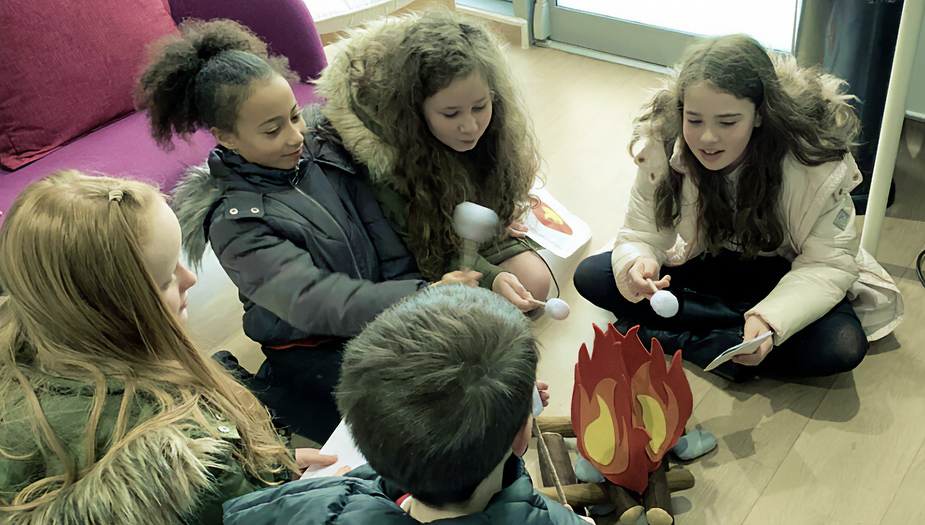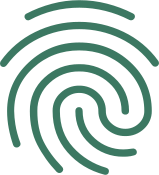Corstorphine Primary School
Transforming the School Culture through Space as the Third Teacher.

Tests of Change
The following case study uses the Plan-Do-Study-Act approach from the Test of Change projects.
Tests of Change (ToC) is based on an action enquiry cycle – Plan, Do, Study, Act (PDSA). This 4-step process encourages learners and educators to be at the forefront of problem-solving and decision-making to drive change in their own learning environments.
Teachers and pupils work together to explore how transforming learning as identified through ToC goals and using design-principles tools can lead to enhancing the quality of learning in our schools.
Plan
Teachers and learners at Corstorphine Primary School wanted to investigate ways in which their learning spaces could be enhanced.
The learners completed a mind-mapping exercise exploring what makes a positive learning environment.
Teachers and learners evaluated, discussed and identified spaces where learning design might lead to renovation and enhancement.
They chose a play environment, the school library, a ‘treehouse’, and a wellbeing space. Staff focused on a ‘support for learning’ space.
Do
Once the spaces had been identified, the learners got to work designing the changes. The symbolic tools were used to discuss learning and the importance and impact of space, which guided their designs.
The physical tools were also integrated into the design process to help learners conceptualise different layouts and spaces for learning.
A space hack was used with cardboard boxes, Lego and Kapla to plan designs and test what might and might not work in the space.
The learners created 2D and 3D designs in groups and shared and discussed their ideas. This process helped to develop understanding of scalability and the applicability of their design ideas.
It also helped to spark discussions about the importance of the spaces being inclusive and accessible for all learners.

Study
Throughout the process, teachers mapped their learning-space design activities against the school’s priorities. They used documents like the school improvement plan, how good is our school? (HGIOS), and CfE.
Learners were at the forefront of co-designing the renovation of the two specialist spaces, with inclusivity and learner ownership at the forefront of activities.
One newly qualified teacher based their professional inquiry on using the toolkit with learners. They described how the process had promoted learner voice and led to the creation of truly inclusive learning spaces.
The teachers ensured that all design activities using the tools were clearly linked to learning and the curriculum. And they made sure they could show clear evidence of the impact on the learners, teachers and wider school.

Act
Teachers hugely valued the conceptual nature of the symbolic tools. They reported how the tools created new possibilities for discussing with learners the values underpinning their learning. And they said they gave a clear strategy for planning designs.
The physical tools provided valuable opportunities for experiential learning. The cardboard boxes, Lego, and Kapla proved hugely engaging for the learners.
As well as allowing them to get ‘hands-on,’ teachers saw examples of learners developing important skills around creativity, leadership and resilience.
The school found that a combination of tools (symbolic, physical and digital) proved most effective. It led them to consider ways in which they could enhance learners’ creativity and the freedom and confidence to combine skills.
The headteacher felt that learning space design was beginning to transform the school culture, with teachers and learners thinking of and looking at spaces in new ways.
The school has put in place a strategy for all classes to start engaging with the tools and learning space design. That strategy applies to both adapting places and creating new ones. The aim is to create a shared understanding of learning space design in practice.
Experiences and Outcomes achieved through the Tests of Change process

Recognition and value
HWB 0-10a / HWB 1-10a / HWB 2-10a / HWB 3-10a / HWB 4-10a

I recognise that each individual has a unique blend of abilities and needs. I contribute to making my school community one which values individuals equally and is a welcoming place for all.

Behaviour
HWB 0-04a / HWB 1-04a / HWB 2-04a / HWB 3-04a / HWB 4-04a

I understand that my feelings and reactions can change depending on what is happening within and around me. This helps me to understand my own behaviour and the way others behave.
“It’s important for children to get involved in classroom design because it’s going to be their environment, and it’s better for you to feel like you’ve picked it and it’s comfortable for you, and it helps you learn more, and it’s just a better environment for you.”
How can the room we work in make a lesson better or more inspiring?
The spaces we work and learn in play a huge part in shaping our mental health, happiness, and ability to learn. Our Shared Learning toolkit will help guide you and your pupils step-by-step on a collaborative mission to find the answers.
